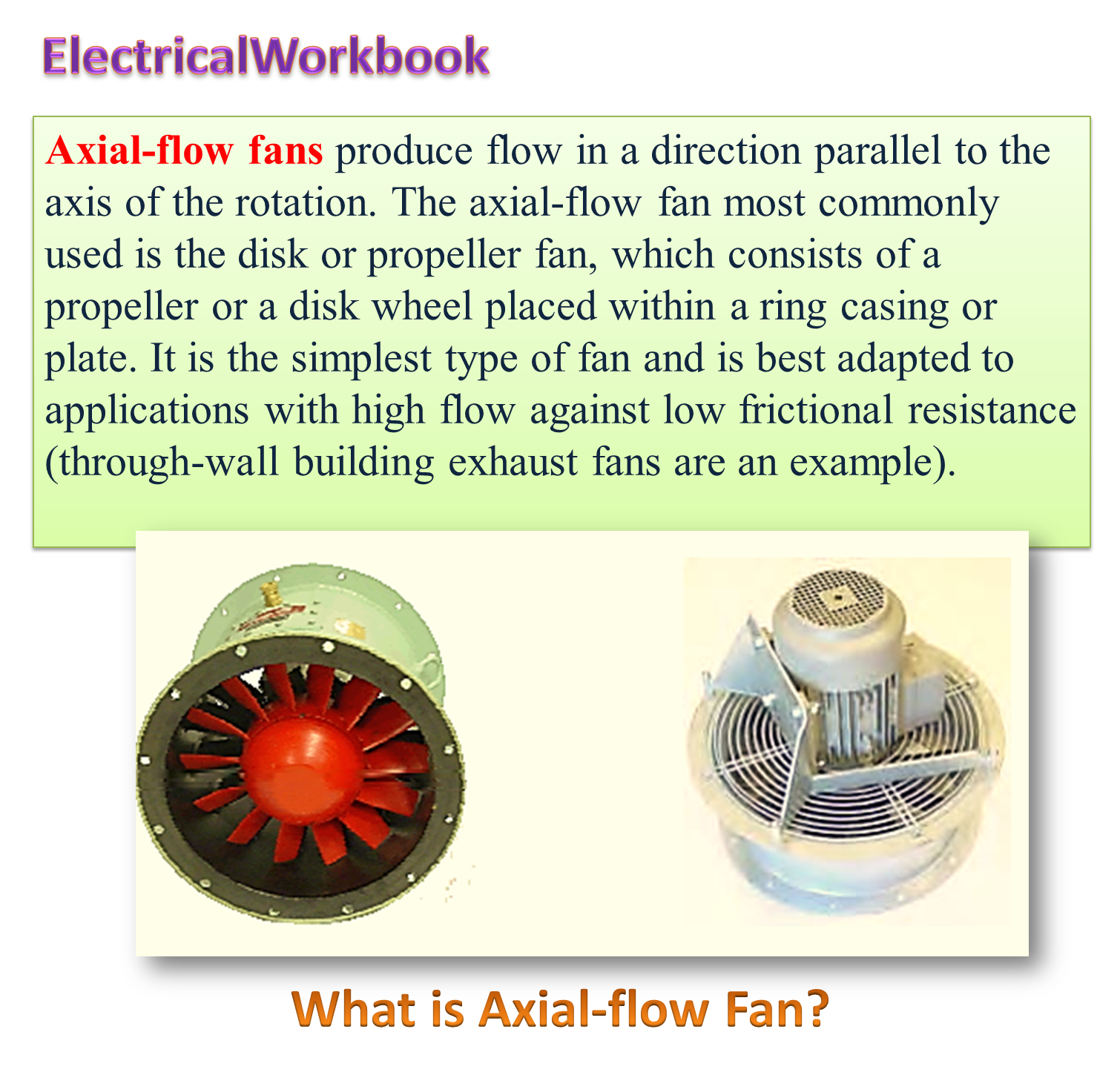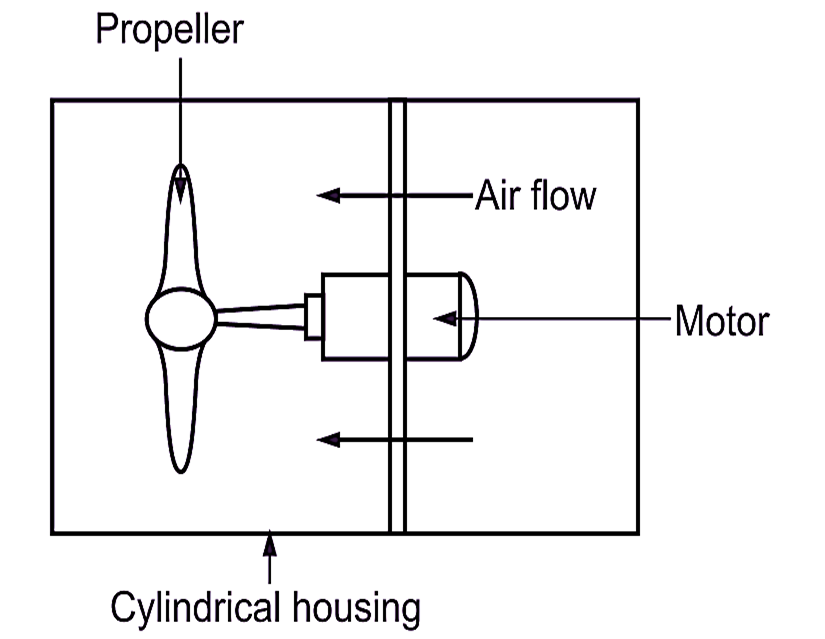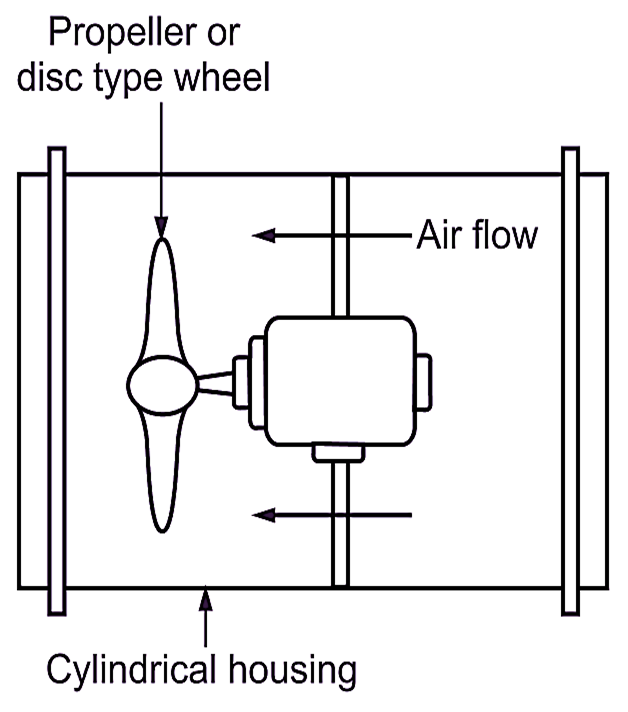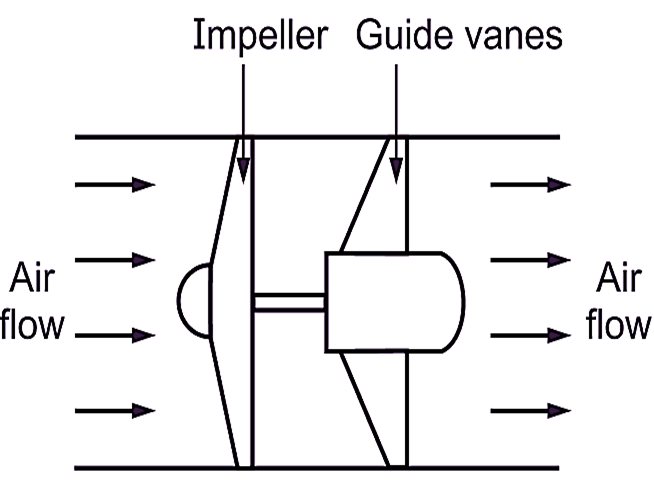
Axial flow fans produce an air flow in a direction parallel to the axis of rotation, i.e., the air flow is parallel to the axis of the Impeller, hence the name. These fans can handle large volume of air but their operation creates noise, hence used in industries, where noise has little considerations.
These fans have best performance where air flow required against low resistance. These fans give good efficiency and tolerable noise level in air-conditioning work. When there is no duct work, axial flow or Impeller fans can be used. These fans are very much used as exhaust fans in kitchens, lavatories, bathrooms to remove odor and at many other places where no duct work is required.
In axial flow fan, airflow is parallel to the axis of impeller. In other words, when suction and delivery are in the same direction, i.e. parallel to axis of fan, then it is called an axial flow fan.
Types of Axial Flow Fan
They are of three types:
- Propeller type.
- Tube axial type.
- Vane axial type.
Propeller type:

Fig. 1: Propeller type axial flow fan.
It consists of a propeller or disc type wheel, which operates within a cylindrical housing. Blades are twisted and projected radially outwards from the hub (see Figure 1). The number of blades may vary from two to six. The quantity of air delivered depends upon the number of blades. A propeller fan is low-pressure high capacity fan, which requires less power than centrifugal fan.
Tube axial flow fan:

Fig. 2: Tube axial flow fan.
It consists of a heavy-duty propeller wheel, which operates within a simple cylindrical housing. It is more efficient than propeller fan. The air delivered by tube axial fan follows a spiral path, when it leaves the cylindrical housing (see Figure 2). Tube axial flow fans are duct-mounted, whereas the propeller fans are wall or diaphragm mounted. Since tube axial flow fans produce high noise level, therefore, their use is limited to applications, where noise level is not a major problem.
Vane axial flow fan:

Fig. 3: Vane axial flow fan.
It is also called as ‘tube axial fan with vanes’. A vane axial flow fan is mounted in a cylindrical housing with a set of air guide vanes (see Figure 3). Since the vanes are located at the delivery side of wheel, it helps to straighten out the path of discharged air. Due to such an arrangement, the fan eliminates spiral flow of the discharge air.
Advantages of Axial Flow Fan
- Reducing turbulence of flow.
- Silent operation due to straight flow.
- Working efficiency and pressure characteristics of vane axial flow fan are better than tube axial fan.
Disadvantages of Axial Flow Fan
- The only disadvantage of vane axial flow fan is non-ability to develop high pressures. Therefore, they are not preferred for duct air conditioning systems.